Table of Contents
Introduction
As your little one reaches the exciting milestone of self-feeding, offering easy-to-hold, melt-in-the-mouth snacks becomes a game-changer. Baby Puffs Snacks are designed precisely for tiny graspers, dissolving safely even if your baby still has only a few teeth. This guide dives deep into everything you need to know—from developmental advantages and nutritional breakdowns to DIY recipes and safety tips—so you can confidently include these treats in your baby’s menu.
What Are Baby Puffs Snacks?
Baby Puffs Snacks are light, airy cereal-based bites specially formulated for infants. They:
- Dissolve quickly on contact with saliva
- Come in mild flavors like banana, apple, or carrot
- Contain no added sugar or preservatives
- Are often fortified with essential vitamins and minerals
Designed for babies around six months and beyond, they encourage self-feeding and fine motor skill development.
Nutritional Benefits of Baby Puffs
| Nutrient | Typical Amount per 5g Serving | % Daily Value (6–12 months) |
|---|---|---|
| Calories | 20 kcal | — |
| Total Carbohydrates | 4 g | — |
| Dietary Fiber | 0.5 g | 3% |
| Vitamin A | 45 µg | 5% |
| Vitamin C | 3 mg | 10% |
| Iron | 0.3 mg | 5% |
| Calcium | 10 mg | 2% |
Tip: Always check labels for added sugars. Choose puffs with whole-grain bases and minimal ingredients.
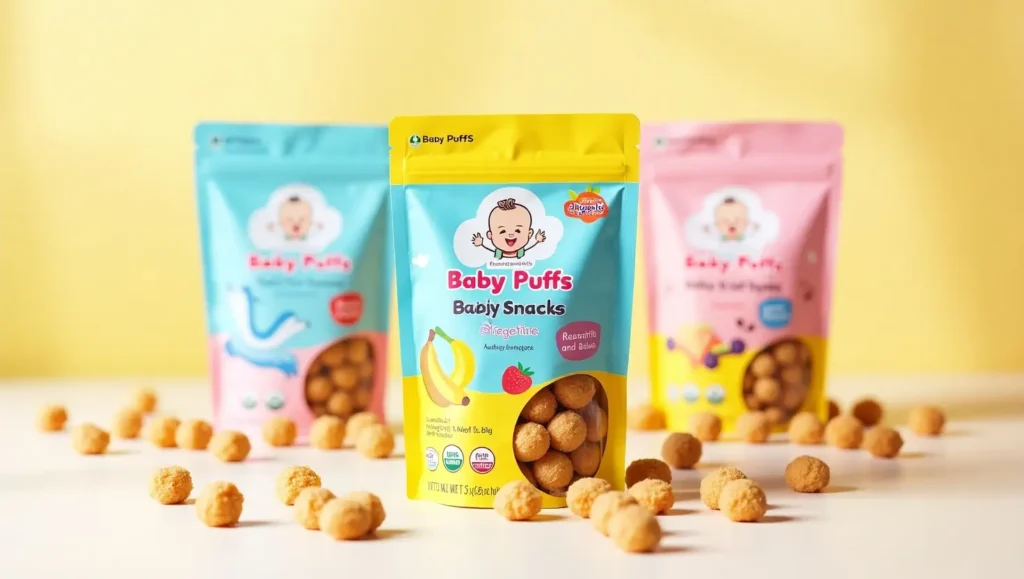
Why These Snacks Support Development
Early self-feeding builds coordination, confidence, and independence. By allowing your baby to grasp and pop pieces into their mouth, you:
- Enhance pincer grip and hand-eye coordination
- Foster sensory exploration through varied textures and flavors
- Support oral‐motor development crucial for speech
- Encourage autonomy, boosting toddler self-esteem
Pair snack time with conversation: narrate textures—“soft,” “crunchy,” “melt”—to enrich vocabulary.
Baby Puffs Snacks Recipes
Creating your own Baby Puffs Snacks ensures total control over ingredients. Below are three simple, oven-baked recipes:
1 Banana Oat Puffs
Ingredients:
- 1 ripe banana, mashed
- ½ cup oat flour
- 2 tbsp breastmilk/formula
Instructions:
- Preheat oven to 180 °C (350 °F).
- Mix banana, flour, and liquid into a smooth batter.
- Pipe tiny dots on parchment.
- Bake 12–15 minutes until firm.
- Cool completely before serving.
2 Carrot & Sweet Potato Puffs
Ingredients:
- ½ cup steamed carrot puree
- ½ cup steamed sweet potato puree
- ½ cup rice flour
Instructions:
- Combine purees with rice flour; stir until cohesive.
- Shape into pea-sized balls.
- Bake at 175 °C (350 °F) for 15–18 minutes.
- Let dry overnight for extra crispiness.

3 Spinach & Cheese Puffs
Ingredients:
- ¼ cup pureed spinach
- ¼ cup grated mild cheese
- ½ cup chickpea flour
Instructions:
- Mix ingredients into a firm dough.
- Roll into tiny logs, then slice into puffs.
- Bake at 180 °C (350 °F) for 10 minutes.
- Cool and store in an airtight container.
Pro Tip: For more recipe ideas, check our full Baby Crab Snack collection.
How to Introduce Snacks Safely
When starting baby snacks puffs 6 months, follow these steps:
- Wait for signs of readiness: sits unsupported, reaches for food.
- Offer 1–2 puffs on a highchair tray.
- Stay within arm’s reach; supervise every bite.
- Observe for allergies: introduce single-ingredient puffs first.
- Increase variety gradually, adding new flavors one at a time.
Always ensure your baby is seated upright to minimize choking risk.
Commercial vs. Homemade: Pros & Cons
| Aspect | Commercial Puffs | Homemade Puffs |
|---|---|---|
| Convenience | Ready-to-serve, portable | Requires prep time and baking |
| Ingredient Control | Varies by brand; check labels | Full control over quality and flavor |
| Shelf Life | 9–12 months | 2–4 weeks (airtight storage) |
| Texture Consistency | Uniform dissolve | May vary batch-to-batch |
| Cost per Serving | Moderate to high | Often more economical |
Baby Puff Snacks Age & Portion Guide
Different stages call for adjustments in portion and texture:
| Age Range | Portion Size | Texture Focus | Notes |
|---|---|---|---|
| 6–8 months | 2–4 puffs | Very soft, quick dissolve | Start slow; monitor interest |
| 9–12 months | 4–6 puffs | Slightly firmer | Encourage self-feeding skills |
| 12–18 months | 6–8 puffs | Crisp puffs acceptable | Mix with soft fruits or yogurt |
| 18+ months | 8–10 puffs | Standard snack texture | Can complement a balanced plate |
Adjust portions based on appetite and overall diet.
Troubleshooting Common Concerns
- Choking Fears: Choose puffs that dissolve within 10 seconds in saliva. Always supervise.
- Allergies: Opt for rice- or oat-based puffs; introduce potential allergens (e.g., dairy cheese) separately.
- Disinterest: Rotate flavors or serve alongside favorite purees to pique curiosity.
- Mess Management: Use a silicone placemat under the highchair tray for easy cleanup.
For more Baby Shower Food Ideas, including snack stations perfect for expecting parents, click here.
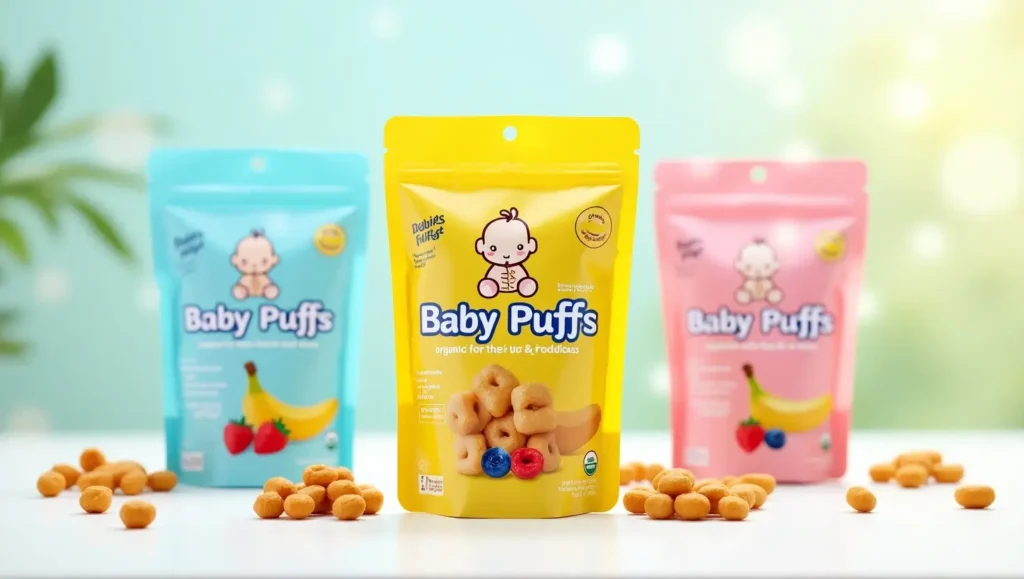
FAQs
Q1: At what age can babies handle baby puffs?
Most infants (around six months) can begin with soft, melt-away puffs once they can sit upright and grasp items.
Q2: Are baby puffs suitable for allergic babies?
Many are made from single-ingredient grains. Always read labels and start with small amounts to check for reactions.
Q3: How should I store homemade puffs?
Cool completely, then store in an airtight container in a cool, dry place for up to two weeks.
Q4: Can older toddlers eat baby puffs?
Yes—if they enjoy the texture. They make quick, nutritious finger foods for toddlers on the go.
Conclusion
Baby Puffs Snacks simplify the self-feeding journey with safe textures and wholesome nutrition. Whether you choose store-bought or homemade, these melt-in-the-mouth treats support motor skills, sensory exploration, and independent eating. Remember to introduce them mindfully, monitor portions, and incorporate variety to keep your baby engaged and nourished. By mastering the art of puff preparation—commercial or DIY—you’re setting the foundation for lifelong healthy eating habits.
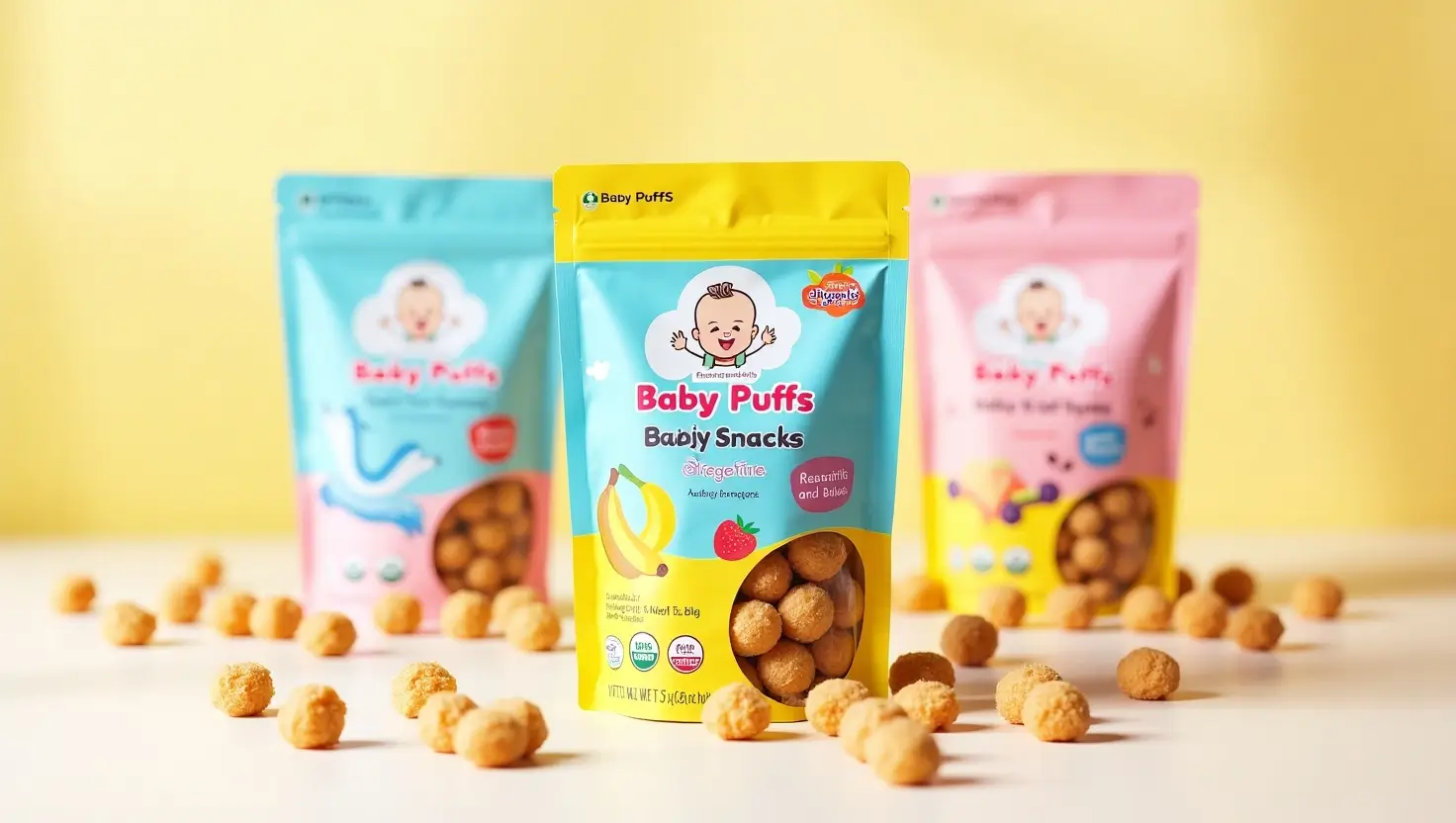
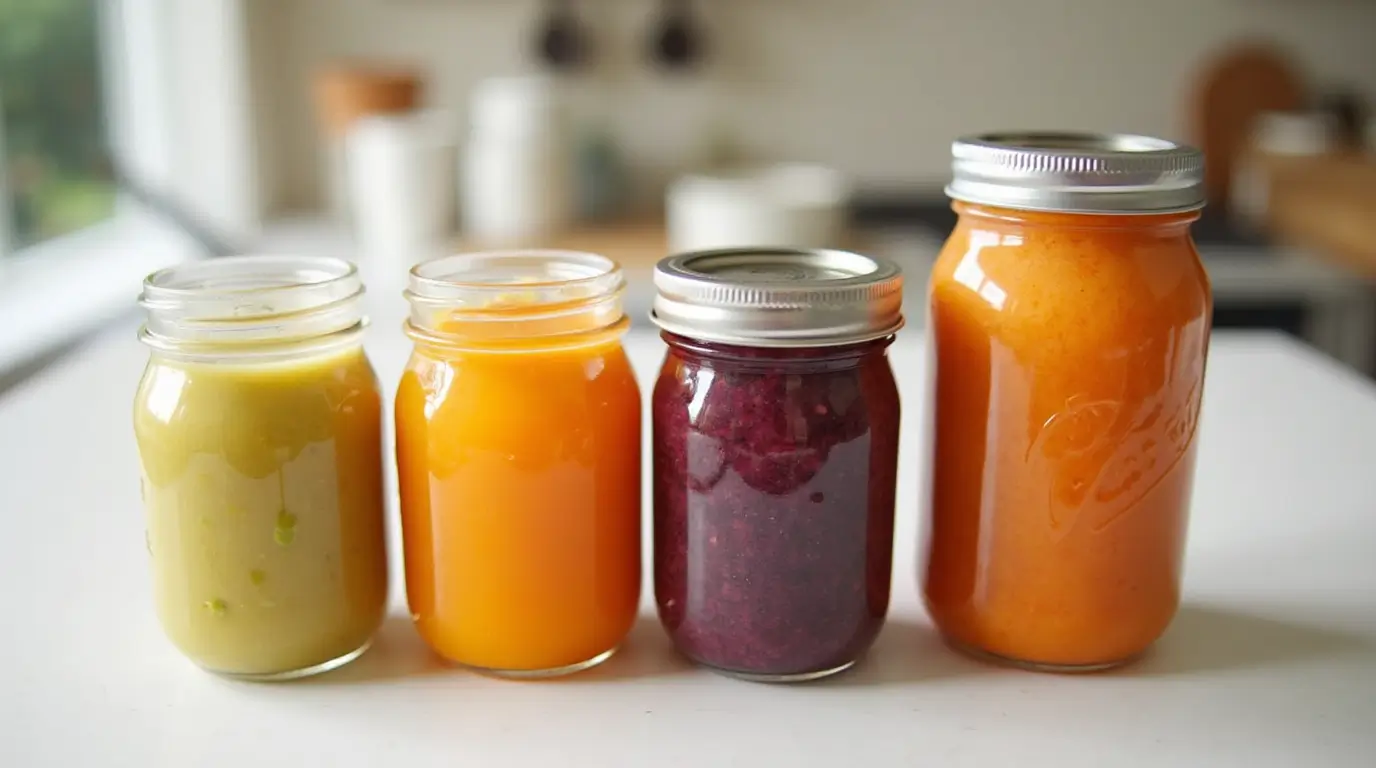

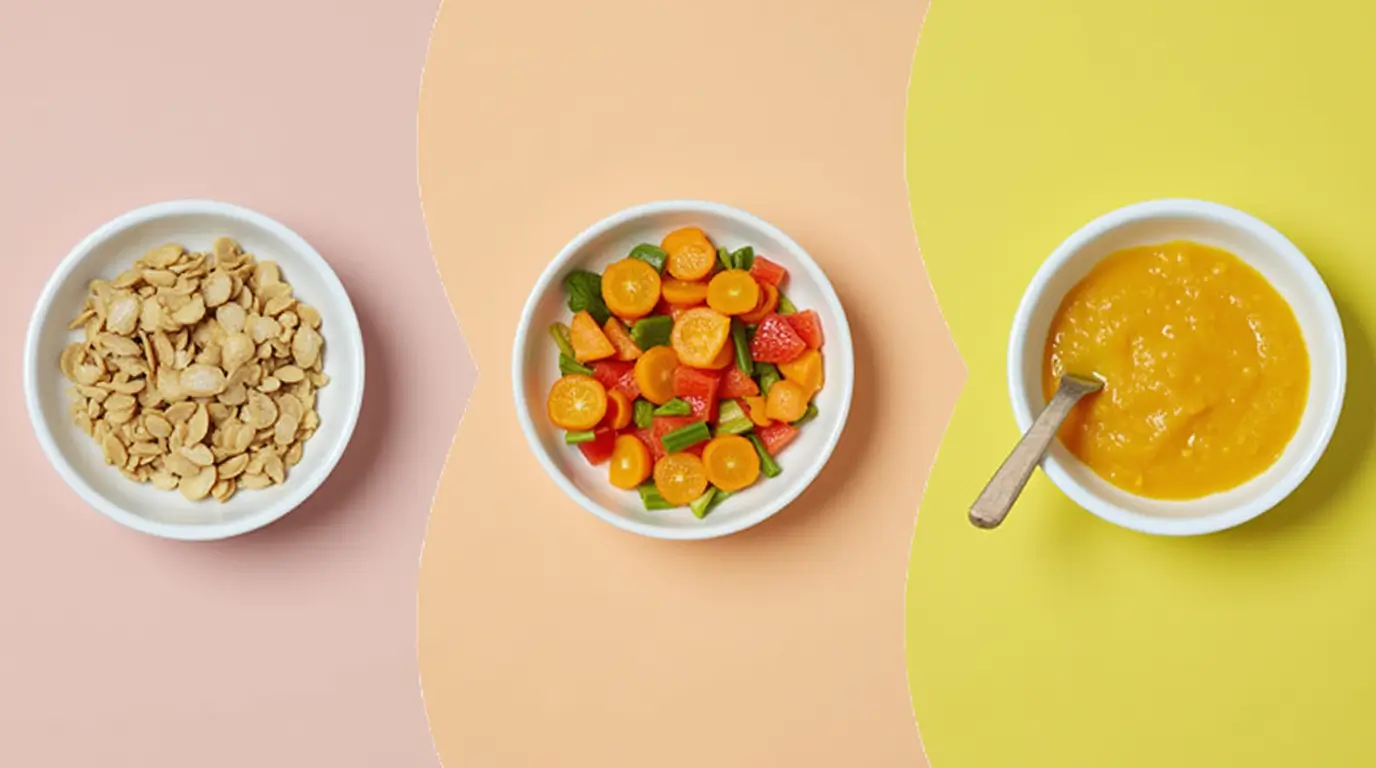
One thought on “Baby Puffs Snacks”
Comments are closed.